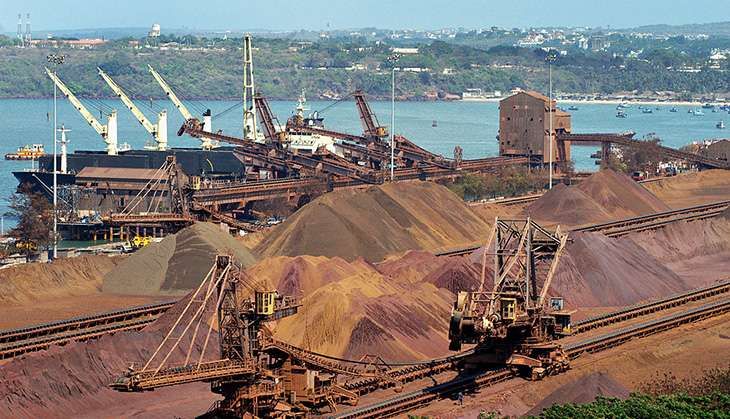Panaji (Goa) A senior professor and researcher has predicted that the iron ore reserves in the coastal state of Goa could be exhausted in another ten years or so, while they may even disappear in another five years, if overexploitation is resorted to.
“Unless new reserves are located, the current high grade reserves of iron ore will not last for more than about ten years. However, it depends on the rate of exploitation of the resource. If many companies are involved in mining and that too at a rapid pace, the iron ores might not survive even for five years,” said Prof. Ashoka Dessai, a senior geologist and former professor from Goa University and Pune University, who is ready with the first ever book entitled “Geology and Mineral Resources of Goa.”
The book which is a comprehensive publication on the topic would be released onSunday, January 28 at the hands of CSIR-National Institute of Oceanography, Director Dr. Sunil Kumar Singh.
Though Prof. Desai’s book touches upon the technical aspects of geology and the formation of resources in Goa, the researcher who joined State’s lone university in the year 1987, advices that Goa should not go for overexploitation of resources the way it used to be before the Supreme Court ban in the year 2012.
“We should fix the maximum quantum of ore that could be mined per year locally and accordingly take up the extraction activity so that the reserves would last longer, simultaneously beneficiation/blending of low grade ores as well as processing the ores from neighbouring state should be undertaken so as to extend the life of the industry and reap maximum benefits” he said.
Prof. Desai said that the quest should be to search for new reserves and new mineral materials in the State. “Supposing if iron ore or manganese ore reserves are exhausted, then there would be serious economic crisis? There will be unemployment. Therefore, it is essential that alternate mineral resources of other mineral commodities are prospected for” he said.
The researcher who has mentored several geologists in the State and in Pune banks on alternatives such as Laterite to make up for the void that would be created in case iron ore and manganese ore reserves dry up.
“When we speak about laterite we think that is can be used only for construction activity. Laterites are known to host economic proportions of precious metal such as gold. Studies from parts of Goa have shown promising results from the lithomarge horizons. Now the issue is whether commercial extraction is viable or not” he said.
“Of late, laterites are being increasingly prospected for rare earth metals that find a variety of applications in lasers, computer memory modules, batteries, lamps, superconductors, aerospace, caustic cleaning agents, manufacture of specialized glass among others”.
Prof. Desai said that “India has been importing rare earth element concentrates from other countries such as China. Being a strategic mineral resource, indigenous production can save the much needed foreign exchange, in which laterites can play a significant role.
He said, likewise bauxite, which is mined from south Goa. “The aluminium metal extracted from the ore of bauxite can also be another alternative, as metal aluminium is used in many products, right from manufacturing of soft-drink cans to aeroplanes,” he added.



























